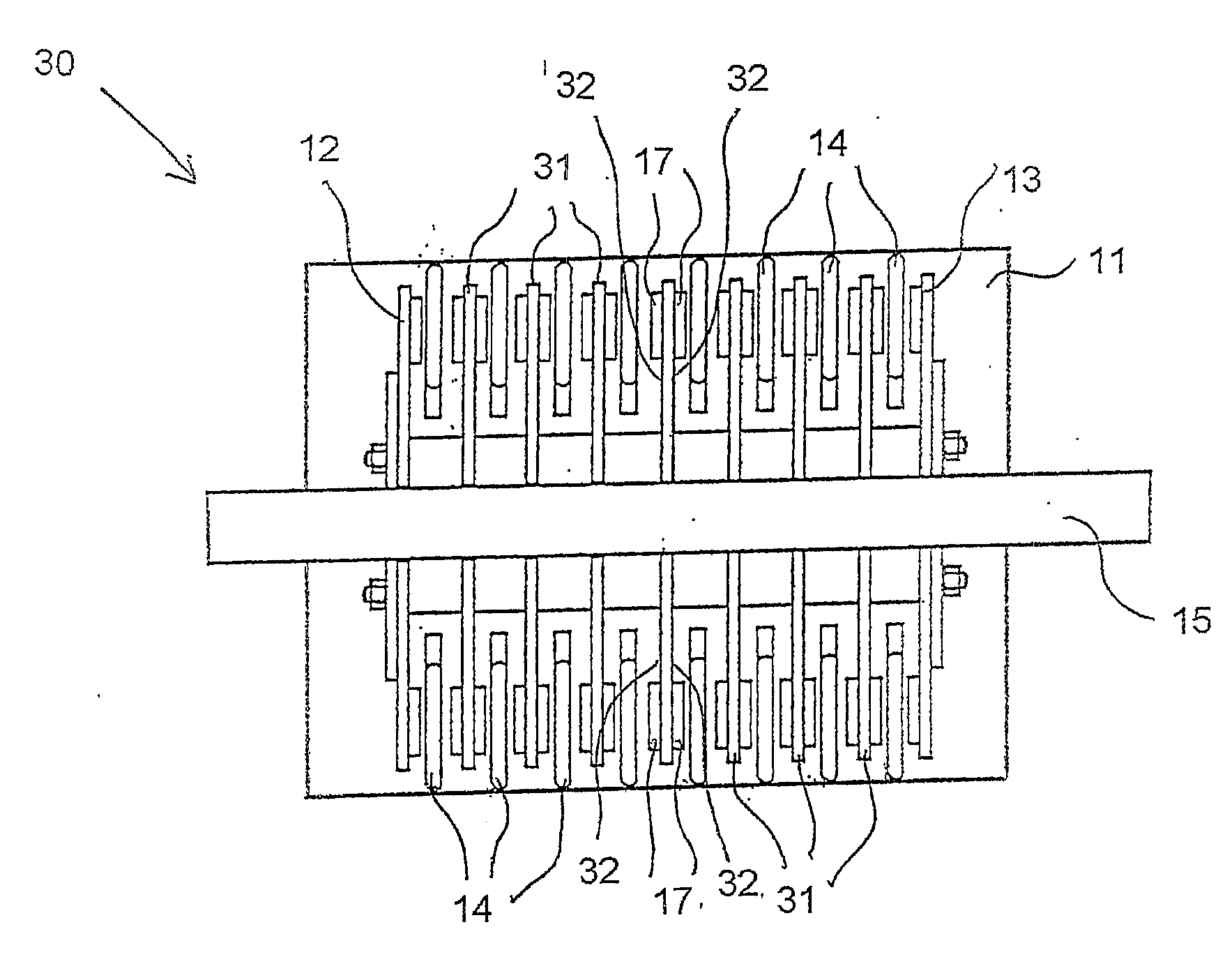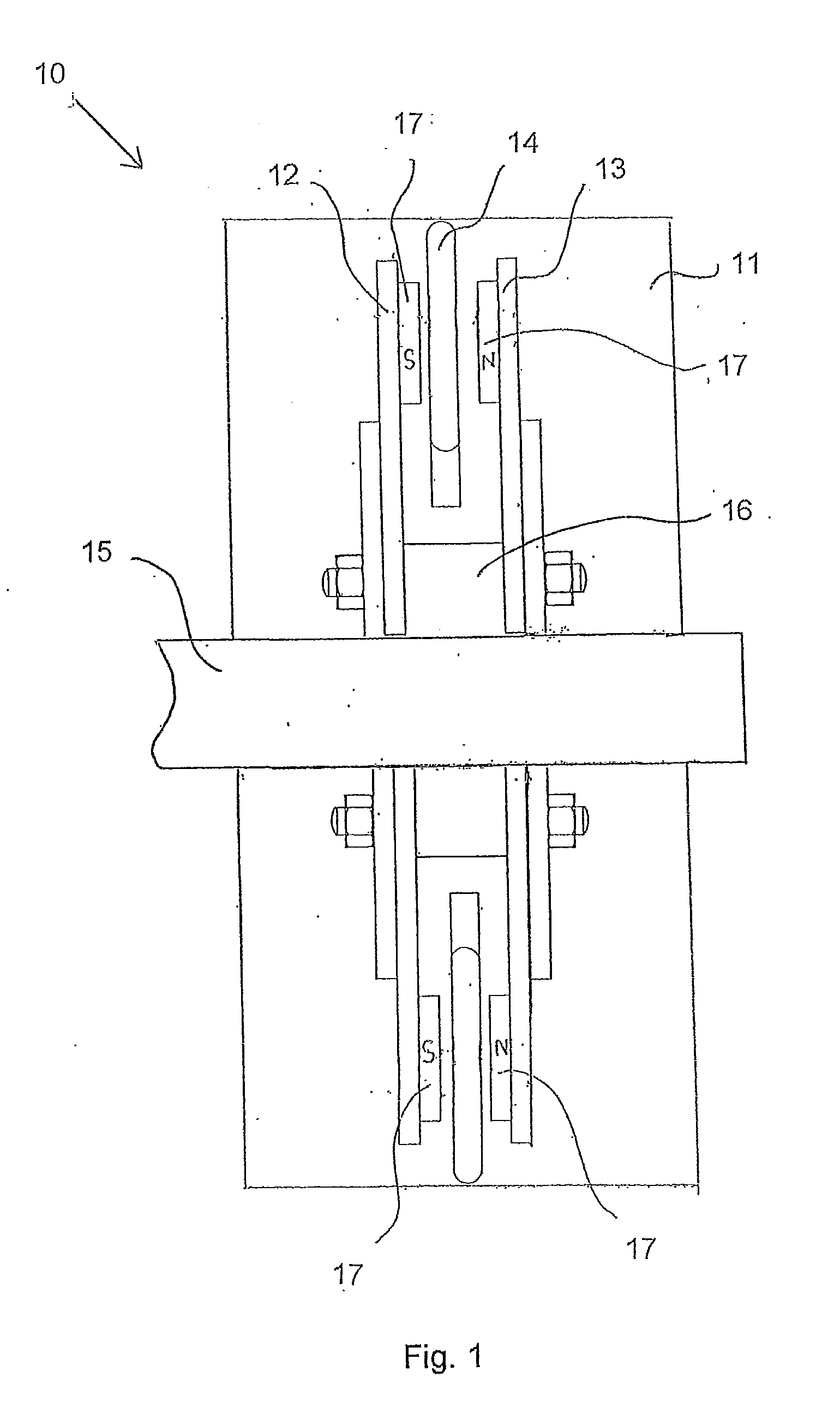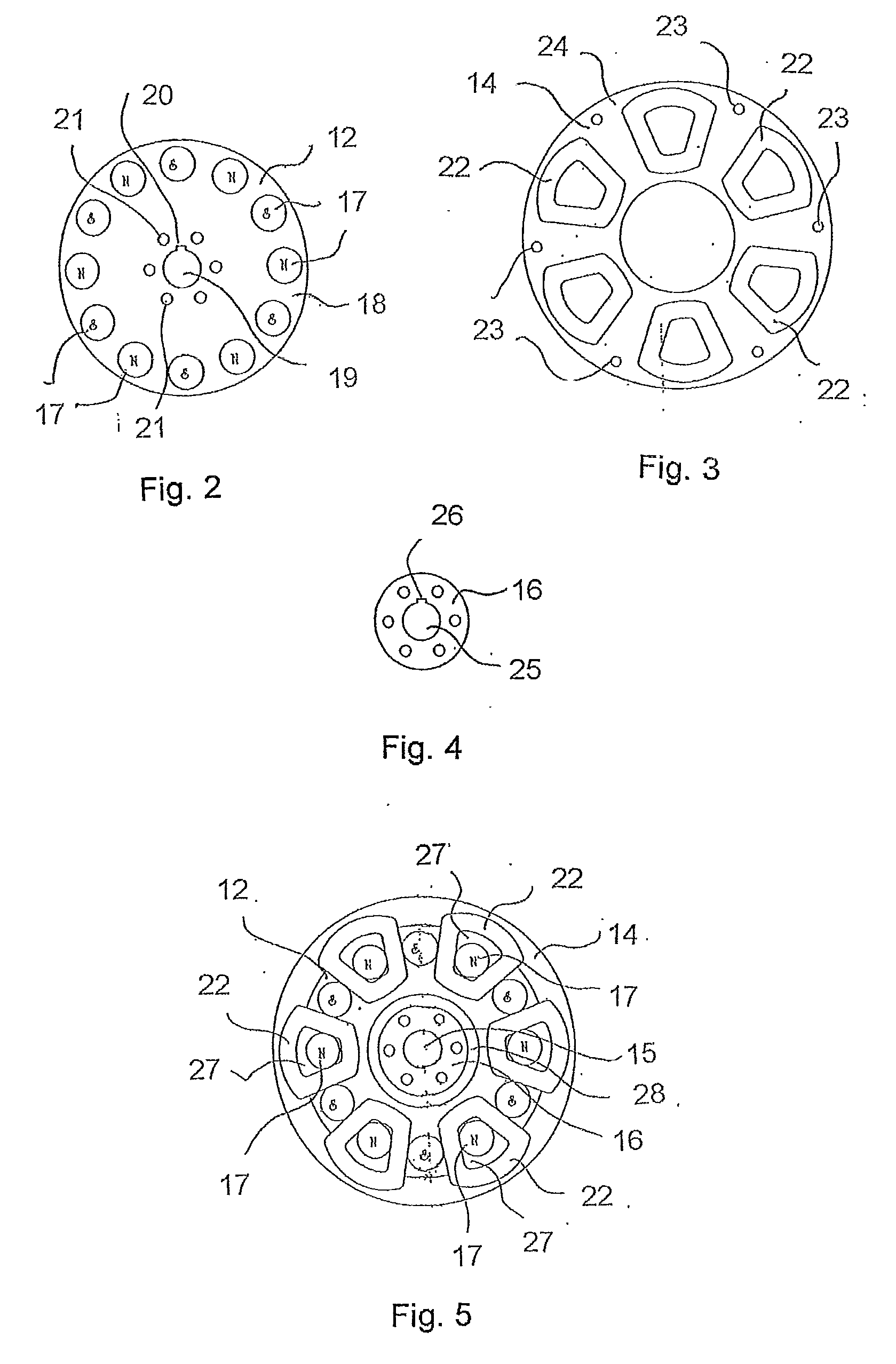Alternator
a permanent magnet alternator and alternator technology, applied in the field of alternators, can solve the problems of low electrical energy output in comparison to mechanical energy input, adverse effects on the efficiency of permanent magnet alternators, and relative poor efficiency
- Summary
- Abstract
- Description
- Claims
- Application Information
AI Technical Summary
Benefits of technology
Problems solved by technology
Method used
Image
Examples
Embodiment Construction
[0049]The invention will be further illustrated by the following description of embodiments thereof, given by way of example only with reference to the accompanying drawings.
[0050]Referring to FIG. 1, there is indicated, generally at 10, an alternator, in accordance with the invention, the alternator 10 comprising a housing 11, a pair of opposed magnet end plates 12, 13 mounted within housing 11, a coil plate 14 mounted in and held in position within the housing 11, between the pair of magnet end plates 12, 13. A drive shaft 15 is located within the housing 11 and is coupled to the pair of magnet end plates 12, 13. A spacer 16, on the drive shaft 15, maintains a set distance between the pair of magnet end plates 12, 13.
[0051]Each magnet end plate 12, 13 has a plurality of permanent magnets 17 disposed thereon. Each magnet 17 on the opposed magnet end plate 12 is aligned with a magnet 17 of opposite polarity on the other magnet end plate 13.
[0052]Referring to FIG. 2, the magnet end p...
PUM
 Login to View More
Login to View More Abstract
Description
Claims
Application Information
 Login to View More
Login to View More - R&D
- Intellectual Property
- Life Sciences
- Materials
- Tech Scout
- Unparalleled Data Quality
- Higher Quality Content
- 60% Fewer Hallucinations
Browse by: Latest US Patents, China's latest patents, Technical Efficacy Thesaurus, Application Domain, Technology Topic, Popular Technical Reports.
© 2025 PatSnap. All rights reserved.Legal|Privacy policy|Modern Slavery Act Transparency Statement|Sitemap|About US| Contact US: help@patsnap.com



